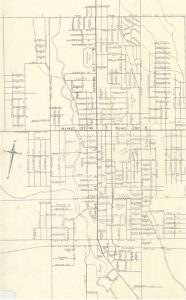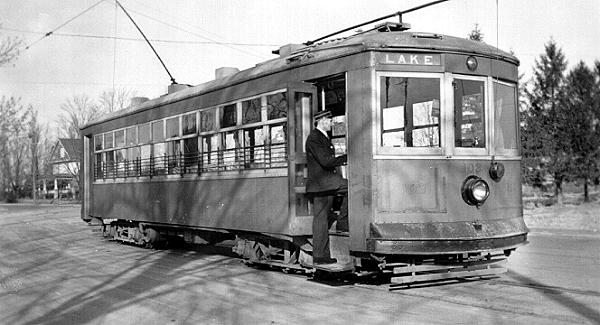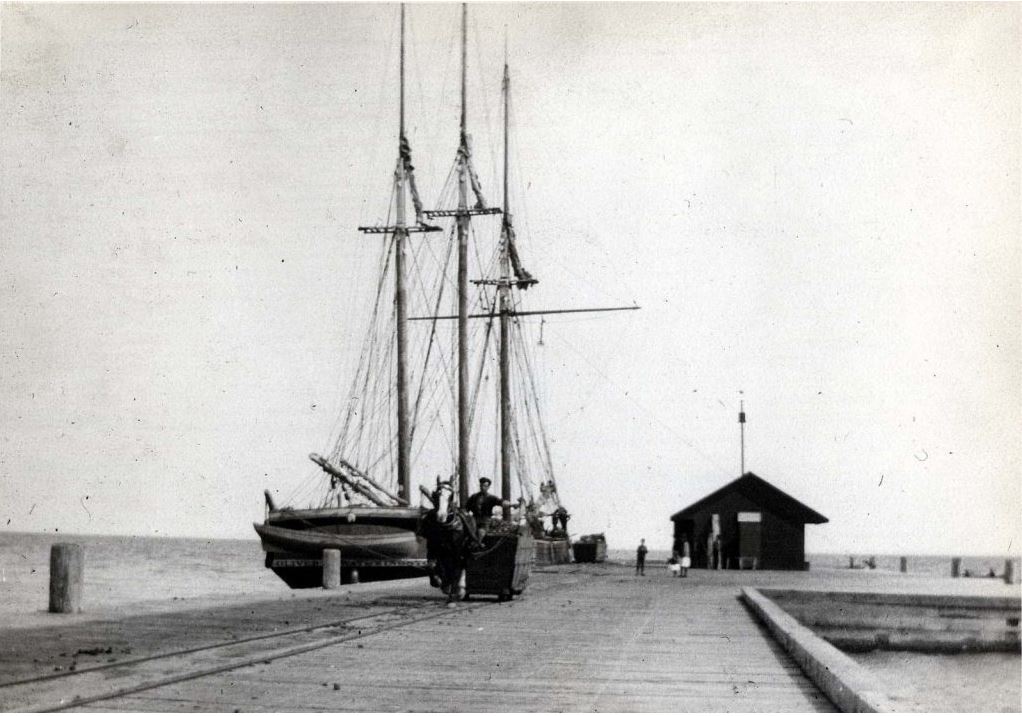Oshawa Railway Connects Waterfront to the Town of Oshawa
We walked three miles to the lakefront, or took the rocky ride on the streetcar having boarded at the sheds at Athol & Simcoe.
– Jean Warnica, 2002
On June 23, 1887, the Oshawa Railway and Navigation Company was established by F. S. Rathbun of the Rathbun family of Deseronto industrialists, and Captain R. C. Carter. The focus of the Oshawa Railway was on Simcoe Street, through the middle of Oshawa. This railroad could help transport building materials into the city, help local industries move more products to market, and provide more convenient transportation for passengers. Not only did this serve the most residents, connecting them to the downtown area, but it was also the most direct route between the Port of Oshawa and the Grand Trunk Railway north of the city.

Oshawa Street Map from 1925 showing the Oshawa Street Railway line that ran from Ross’ Road to lakefront, where Lakeview Park is today.
In 1911, the Town of Oshawa commissioned the Ontario Reformer newspaper printing house to produce a 36-page publication called The Oshawa Illustrated, promoting the businesses and “natural advantages and resources of Oshawa” to prospective investors. The Oshawa Railway was praised as follows:
A regular passenger service is run to Oshawa-on-the-Lake to the South, and to the town limits and the Fair Grounds on the North, the fare being five cents. The service is an excellent one, conductors and motormen are courteous and obliging.
The Oshawa Electric Railway consisted of 14.5 km (9 miles) of main line, 3 km (2 miles) of secondary track and 1.5 km (1 mile) of siding. It ran north from the lake to Rossland Road. Fares for passengers were 6 cents each or five tickets for 25 cents.
I remember the old wooden harbour pier from which we dived and swam. Naturally we recklessly played chicken with the numerous single seat speed boats we called ‘sea fleas.’
– Ed Rodesky, 2002
Vessels from the United States occasionally brought in cargoes of coal but there was little outward trade. At this time, the harbour consisted of a wooden pier extending 700 feet (213 metres) out from the shore. Due to the shallow water, only small vessels could dock and unload their cargoes.
Since 1903, the federal government has owned the land and been involved in financing the operations of Port Oshawa. Much of the cargo at this time was coal, and a tramway ran the length of the wooden pier to the shore to allow for the cargo to be unloaded and stored in coal sheds. For many years, little was done in the form of development around the harbour lands. Plans for creating a harbour basin were made in 1914, but the outbreak of war stopped the work.



